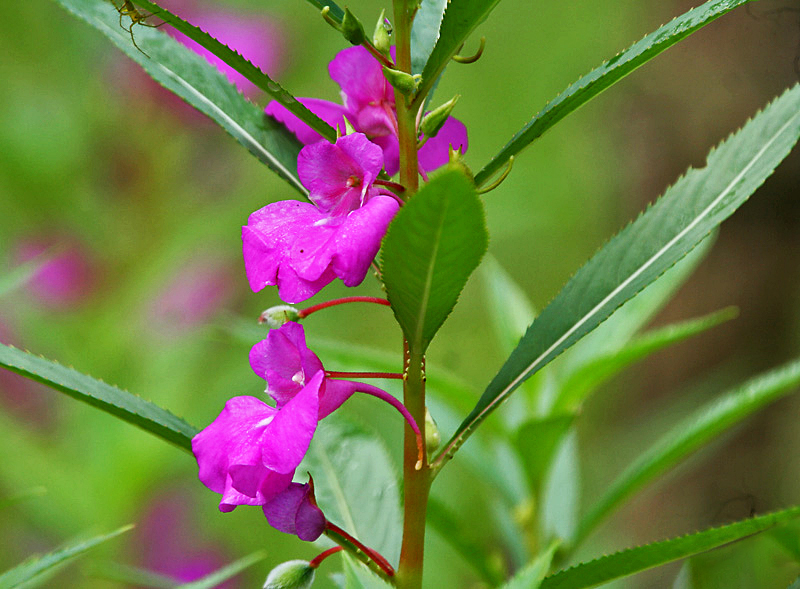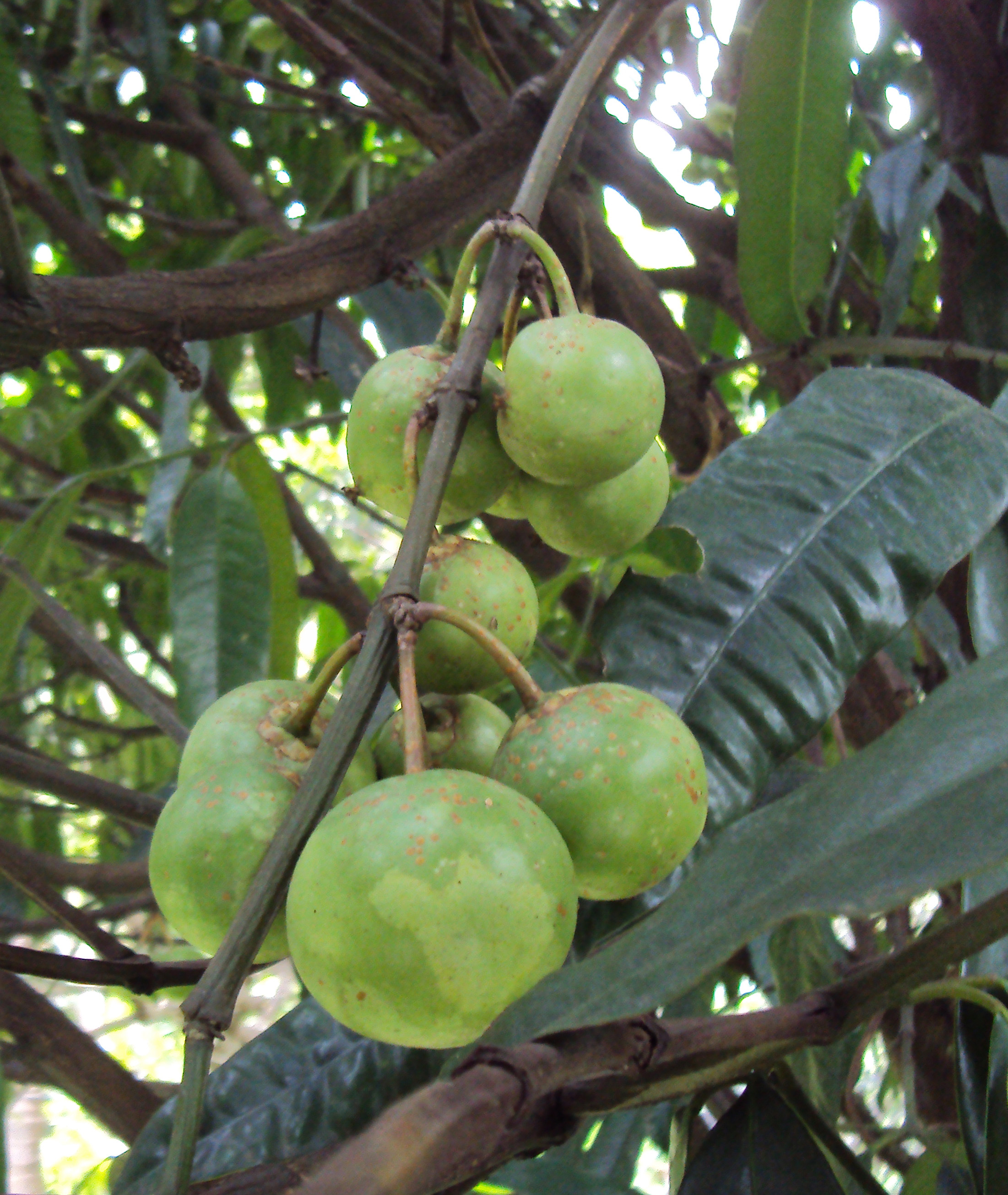|
Theales
Theales is a botanical name at the rank of order. Early classifications such as that of Dahlgren placed the Theales in the superorder Theiflorae (also called Theanae). The name was used by the Cronquist system for an order placed in subclass Dilleniidae, in the 1981 version of the system the circumscription was: * order Theales *: family Ochnaceae *: family Sphaerosepalaceae *: family Dipterocarpaceae *: family Caryocaraceae *: family Theaceae *: family Actinidiaceae *: family Scytopetalaceae *: family Pentaphylacaceae *: family Tetrameristaceae *: family Pellicieraceae *: family Oncothecaceae *: family Marcgraviaceae *: family Quiinaceae *: family Elatinaceae *: family Paracryphiaceae *: family Medusagynaceae *: family Clusiaceae In the APG II system (used here) the taxa involved are assigned to many different orders, among which are Ericales, Malvales, and Malpighiales The Malpighiales comprise one of the largest Order (biology), orders of flowering plants. The or ... [...More Info...] [...Related Items...] OR: [Wikipedia] [Google] [Baidu] |
Dilleniidae
Dilleniidae is a botanical name at the rank of subclass. Circumscription of the subclass will vary with the taxonomic system being used; the only requirement being that it includes the family Dilleniaceae. A well-known system that uses this name is the Cronquist system, and in the original 1981 version of the system the circumscription was: * subclass Dilleniidae *: order Dilleniales *: order Theales *: order Malvales *: order Lecythidales *: order Nepenthales *: order Violales *: order Salicales *: order Capparales *: order Batales *: order Ericales *: order Diapensiales *: order Ebenales *: order Primulales Recent molecular systematic studies have shown that this group is polyphyletic. The APG II system does not use formal botanical names above the rank of order but assigns the plants involved to various orders in the asterids and rosids clades. References Further reading * {{Cite book , last1=Holmgren , first1=Noel H. , url=https://books.google.com/books?id= ... [...More Info...] [...Related Items...] OR: [Wikipedia] [Google] [Baidu] |
Cronquist System
The Cronquist system is a list of systems of plant taxonomy, taxonomic classification system of angiosperms, flowering plants. It was developed by Arthur Cronquist in a series of monographs and texts, including ''The Evolution and Classification of Flowering Plants'' (1968; 2nd edition, 1988) and ''An Integrated System of Classification of Flowering Plants'' (1981) (''see'' #Bibliography, Bibliography). Cronquist's system places flowering plants into two broad classes, Magnoliopsida (dicotyledons) and Liliopsida (monocotyledons). Within these classes, related orders are grouped into subclasses. While the scheme was widely used, in either the original form or in adapted versions, many botanists now use the Angiosperm Phylogeny Group classification for the orders and families of flowering plants, first developed in 1998. The system as laid out in Cronquist's ''An Integrated System of Classification of Flowering Plants'' (1981) counts 64 orders and 321 families in class Magnoliopsida a ... [...More Info...] [...Related Items...] OR: [Wikipedia] [Google] [Baidu] |
Actinidiaceae
The Actinidiaceae are a small family (biology), family of flowering plants. The family has three genus, genera and about 360 species and is a member of the order Ericales. Distribution They are temperate and subtropical woody plant, woody vines, shrubs, and trees, native to Asia (''Actinidia'' or kiwifruit, ''Clematoclethra'', and ''Saurauia'') and Central America and South America (''Saurauia'' only). ''Saurauia'', with its 300 species, is the largest genus in this family. Although now confined to Asia and tropical Central and South America, evidence indicates in the past the family had a wider distribution. The now extinct genus ''Parasaurauia'' is thought to have belonged to the Actinidiaceae and lived in North America during the early Campanian. Characteristics The plants are usually small trees or shrubs, or sometimes vines (''Actinidia''). The alternate, simple, spiral Leaf, leaves have serrated or entire margins. They lack stipules or are minutely stipulated. They are ... [...More Info...] [...Related Items...] OR: [Wikipedia] [Google] [Baidu] |
Tea Flower
Flowering tea or blooming tea () consists of a bundle of dried tea leaves wrapped around one or more dried flowers. These are made by binding tea leaves and flowers together into a bulb, then setting them to dry. When steeped, the bundle expands and unfurls in a process that emulates a blooming flower,"On Food: Stop and savor the flowering teas" Hsiao-Ching Chou, , May 1, 2007. and the flowers inside emerge as the centerpiece. Typically they are sourced from the |
Malvales
The Malvales are an Order (biology), order of flowering plants. As circumscribed by Angiosperm Phylogeny Group, APG II-system, the order includes about 6000 species within nine Family (biology), families. The order is placed in the eurosids II, which are part of the eudicots. The plants are mostly shrubs and trees; most of its families have a cosmopolitan distribution in the tropics and subtropics, with limited expansion into temperate regions. An interesting distribution occurs in Madagascar, where three endemic families of Malvales (Sphaerosepalaceae, Sarcolaenaceae and Diegodendraceae) occur. Many species of Malvaceae, ''sensu lato'' (in the broad sense), are valued for their wood, with that of ''Ochroma'' (balsa) being known for its lightness, and that of ''Tilia'' (lime, linden, or basswood) as a popular wood for carving. Fruit of the cacao tree (''Theobroma cacao'') are used as an ingredient for chocolate. Kola nuts (genus Cola (plant), ''Cola'') are notable for their high ... [...More Info...] [...Related Items...] OR: [Wikipedia] [Google] [Baidu] |
Ericales
The Ericales are a large and diverse order of flowering plants in the asterid group of the eudicots. Well-known and economically important members of this order include tea and ornamental camellias, persimmon, ebony, blueberry, cranberry, lingonberry, huckleberry, kiwifruit, Brazil nut, argan, sapote, azaleas and rhododendrons, heather, heath, impatiens, phlox, Jacob's ladder, primroses, cyclamens, shea, sapodilla, pouterias, and trumpet pitchers. The order includes 22 families, according to the APG IV system of classification. The Ericales include trees, bushes, lianas, and herbaceous plants. Together with ordinary autophytic plants, they include chlorophyll-deficient mycoheterotrophic plants (e.g., '' Sarcodes sanguinea'') and carnivorous plants (e.g., genus '' Sarracenia''). Mycorrhizal associations are quite common among the order representatives, and three kinds of mycorrhiza are found exclusively among Ericales (namely, ericoid, arbutoid and monotro ... [...More Info...] [...Related Items...] OR: [Wikipedia] [Google] [Baidu] |
APG II System
The APG II system (Angiosperm Phylogeny Group II system) of plant classification is the second, now obsolete, version of a modern, mostly Molecular phylogenetics, molecular-based, list of systems of plant taxonomy, system of plant taxonomy that was published in April 2003 by the Angiosperm Phylogeny Group.Angiosperm Phylogeny Group (2003)An update of the Angiosperm Phylogeny Group classification for the orders and families of flowering plants: APG II.''Botanical Journal of the Linnean Society'' 141(4): 399-436. doi: 10.1046/j.1095-8339.2003.t01-1-00158.x It was a revision of the first APG system, published in 1998, and was superseded in 2009 by a further revision, the APG III system. __TOC__ History APG II was published as: *Angiosperm Phylogeny Group (2003). "An update of the Angiosperm Phylogeny Group classification for the orders and families of flowering plants: APG II". ''Botanical Journal of the Linnean Society'' 141(4): 399-436. (Available onlineAbstractFull text (HTML)Fu ... [...More Info...] [...Related Items...] OR: [Wikipedia] [Google] [Baidu] |
Clusiaceae
The Clusiaceae or Guttiferae Juss. (1789) (''nom. alt. et cons.'' = alternative and valid name) are a family (biology), family of plants including 13 genera and ca 750 species. Several former members of Clusiacae are now placed in Calophyllaceae and Hypericaceae. They are mostly trees and shrubs, with milky sap and fruits or capsule (fruit), capsules for seeds. The family is primarily tropical. More so than many plant families, it shows large variation in plant morphology (for example, three to 10, fused or unfused petals, and many other traits). According to the Angiosperm Phylogeny Group, APG III, this family belongs to the order Malpighiales. One feature which is sometimes found in this family, and rarely in others (e.g., Malpighiaceae), is providing pollinators with "pollination rewards" other than pollen or nectar; specifically, some species offer resin, which certain bees use in nest construction (each Clusiaceae species offers only one type of reward). Taxonomic history ... [...More Info...] [...Related Items...] OR: [Wikipedia] [Google] [Baidu] |
Paracryphiaceae
The Paracryphiaceae are a family of woody shrubs and trees native to Australia, southeast Asia, and New Caledonia. In the APG III system of 2009, the family is placed in its own order, Paracryphiales, in the campanulid clade of the asterids. In the earlier APG II system, the family was unplaced as to order and included only ''Paracryphia''. As presently circumscribed, the family includes three genera: * ''Paracryphia'' Baker f. – 1 species, endemic to New Caledonia * ''Quintinia'' A.DC – 25 species in the Philippines, New Guinea, the east coast of Australia, New Zealand and New Caledonia; formerly placed in the Quintiniaceae * ''Sphenostemon'' Baill. – 10 species in New Guinea, Australia (Queensland) and New Caledonia; formerly placed in the Sphenostemonaceae The evolutionary (phylogenetic In biology, phylogenetics () is the study of the evolutionary history of life using observable characteristics of organisms (or genes), which is known as phylogenetic inference ... [...More Info...] [...Related Items...] OR: [Wikipedia] [Google] [Baidu] |
Elatinaceae
Elatinaceae is a family of flowering plants with ca 35 (to perhaps 50) species in two genera: ''Elatine'' and ''Bergia''. The ''Elatine'' are mostly aquatic herbs, and the ''Bergia'' are subshrubs to shrubs. ''Elatine'' species are widely distributed throughout the world from temperate to tropical zones, with its greatest diversity found in temperate zones. ''Bergia'' is found in temperate to tropical Eurasia and Africa, with two tropical and one tropical to temperate species in the Americas. The center for biodiversity of ''Bergia'' is the Old World tropics, and this is also the center for biodiversity for the family. Neither genus is found in arctic ecosystems. Member of the family have bisexual flowers, usually small flowers, single, or in cymes, with two to five overlapping petals. The plants have opposite or whorled leaves, which may have glands along their margins, and have stipules. The aquatic herbs in the genus ''Elatine'' often have reduced characteristics as par ... [...More Info...] [...Related Items...] OR: [Wikipedia] [Google] [Baidu] |

